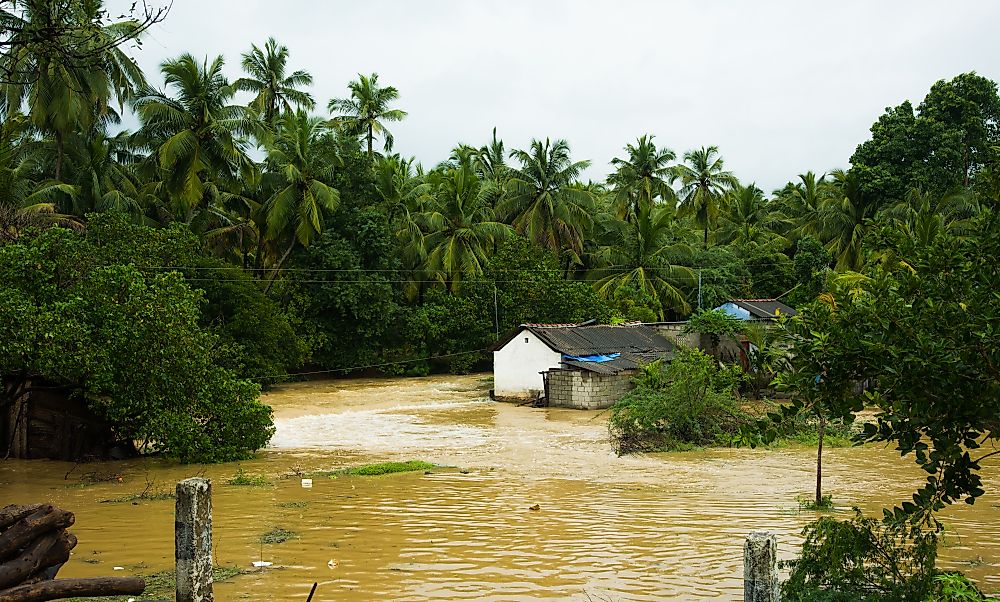The Worst Natural Disasters in Indian History

India is the seventh largest country in the world by land area with the first three large countries being Russia, Canada, and the United States. It is also the second most populous nation in the world with a population of 1.2 billion people. Despite its robust economy and democracy at present, India has experienced some of the worst disasters in the history of the world in the form of famines, earthquakes, cyclones, and tsunamis. Examples of these disasters were the Doji bara famine, Indian famine, Calcutta Cyclone, and the Gujarat Earthquake.
Worst Indian Disasters in World History
The worst famine disasters in Indian history were the Doji bara famine, Indian famine, Bengal famine, and Deccan famine. These famines claimed lives of 11, 6, 3, and 2 million people respectively. The Doji bara famine was also known as the “Skull Famine” because at the time, India was covered with large numbers of skulls of the unburied dead. The famine lasted from 1791-1792. It was caused by a major El-niño that lasted from 1789-1795 CE. The El-niño caused a failure of the South Asian monsoon wind for four years resulting in prolonged droughts. In spite of the British having surplus grain supplies, they refused to supply it to those who needed it most. The worst affected areas as indicated by the widespread mortalities were Hyderabad, Deccan, Marwar, Gujarat, and Maratha Kingdom.
The Bengal Famine resulted in 3 million deaths out of an estimated 60.3 million people. It took place in 1943 which was during the World War II. People died of starvation, malaria, and other diseases related to malnutrition, lack of healthcare, unsanitary conditions, and population displacement. The affected areas were Orissa and Bengal. At that time, Bengal’s economy was mainly agrarian. The famine was caused by stagnant crop yield and stable land use which was not proportional to the fast-growing population. Besides, the Bengal Famine may have also been caused by the effects of the ongoing World War.
Among the worst disasters in India were cyclones such as the 1839 India Cyclone, the 1737 Calcutta Cyclone, and the 1999 Odisha Cyclone. The Calcutta Cyclone and India Cyclone each claimed lives of 300,000 Indians. On the other hand, the Odisha Cyclone resulted in deaths of 9,899 people. Regarding earthquakes, the 2001 Gujarat Earthquake resulted in 20,023 deaths. The number of people who died were the highest ever claimed by an earthquake in India. Another earthquake which preceded the Gujarat one was called the Latur earthquake. It occurred in 1993 and led to the deaths of 10,000 people. Included in the list of the Worst Indian disasters is a 2004 Indian Ocean Tsunami which caused 12,269 deaths.
India’s Preparedness for Natural Disasters
In spite of the over 22 million deaths caused by natural disasters in India, maybe fear that the country is still not prepared to handle heavy natural disasters. While the government has modernized their disaster alert system and implemented other methods of preparedness, others wonder if there is still room for improvement.
The Worst Natural Disasters in Indian History
| Rank | Worst Natural Disasters in Indian History |
|---|---|
| 1 | Doji bara famine - 11,000,000 Deaths |
| 2 | Indian Famine - 6,000,000 Deaths |
| 3 | Bengal Famine - 3,000,000 Deaths |
| 4 | Deccan Famine - 2,000,000 Deaths |
| 5 | 1839 India Cyclone - 300,000 Deaths |
| 6 | 1737 Calcutta Cyclone - 300,000 Deaths |
| 7 | 2001 Gujarat Earthquake - 20,023 Deaths |
| 8 | 2004 Indian Ocean Tsunami - 12,269 Deaths |
| 9 | 1993 Latur Earthquake - 10,000 Deaths |
| 10 | 1999 Odisha Cyclone - 9,899 Deaths |











